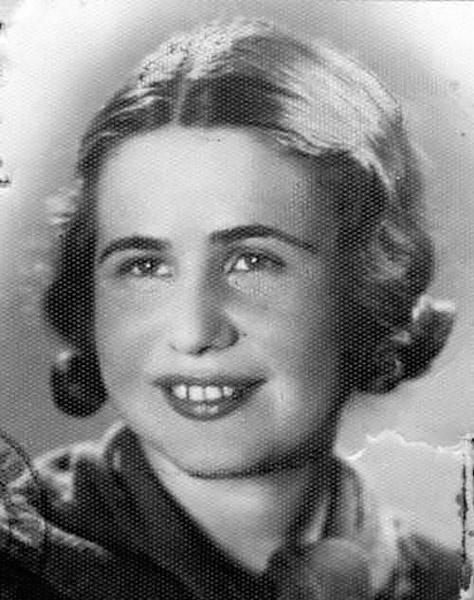
The Talmud in Sanhedrin says that someone who saves one life is like someone who saved an entire universe. If this is true, then Irena Sendler saved nearly 3,000 universes.
Since its inception, Yad Vashem has been in the forefront of identifying and honoring Righteous Gentiles who saved Jews during WWII. Many of these individuals hid Jews in their homes or organized hiding places that allowed Jews to escape the Nazi dragnet. Stories like those of Oskar Schindler (of Schindler's List fame) and Raoul Wallenberg are well-known. Others, no less amazing, are only now beginning to come to light.
One such story involved a Polish woman who saved about 3,000 Jews. Although she was honored by Yad Vashem in 1965, her story was almost forgotten until a group of Uniontown, Kansas students began to investigate the story. Their research resulted in a wide-ranging project which they called Life in a Jar. Their dedication and persistence, including funding from the Jewish-run LMFF, have resulted in a book, website, and nationwide performance which ensure that an important historical event will never be forgotten.
Irena Sendler was a young Polish social worker living in Warsaw when the Germans invaded Poland in 1939. The Germans immediately began to isolate the Jews of Poland through persecution and outright murder. Many Jews were sent away to labor camps or interned in ghettos. Sendler joined the Zagota Polish underground, which was specifically dedicated to helping Jews obtain false papers that identified them as Polish Christians so that they could integrate into Polish cities. Historians estimate that in her capacity as a Zagota member, Sendler assisted over 500 Jews in this manner.
The Warsaw Ghetto, a 3.4 square mile area in the middle of Warsaw, was established in November of 1940. Over 400,000 Jews were interned in the small space, and there was little food available. Dozens of people died every day as the Germans rounded up other Jews to send them to the Treblinka death camp.
Sendler obtained papers that identified her as an infectious disease specialist. She was then able to enter the ghetto with medicines and food when she recognized that the Nazis intended to murder all of the Jews in the ghetto. Sendler began to take street orphans out of the ghetto with her every time she left -- sometimes hidden under her tram seat and other times sedated and placed in packages. Within a short period of time, she also started to approach families to try to convince them to allow her to take their children to the "safe" side of Warsaw.
"I talked the mothers out of their children," Sendler said during an interview that was conducted over half a century after the events. "Those scenes over whether to give a child away were heart-rending. Sometimes, they wouldn't give me the child. Their first question was, 'What guarantee is there that the child will live?' I said, 'None. I don't even know if I will get out of the ghetto alive today."
Sendler and her Zagota comrades often sedated young children and smuggled them out under in pieces of luggage or in toolboxes. Older children were led out through the sewers that ran below the city. Sometimes Sendler hid the children in carts under garbage or placed barking dogs on top of a cart that held a child to distract the German guards.
Once a child was successfully transported to the other side of the ghetto wall, Sendler and her friends obtained false documents for the child and sent the child into hiding, sometimes with sympathetic Polish families and other times in convents and orphanages. The children had to learn Catholic liturgy to internalize their new identities, but Sendler recorded their true names and hiding places on pieces of tissue paper, which were hidden in glass jars in her yard. She hoped that one day, she would be able to reunite them with the Jewish community.
Sendler and her comrades successfully saved nearly 3,000 Jewish children and hid them for the duration of the war. Sendler was arrested by the Gestapo and interrogated, but she didn't reveal any information. As she was being led to her execution, Zagota members procured her release and she spent the rest of the war years in hiding. The Jewish nation is indebted to Sendler for protecting 3,000 of our children.

